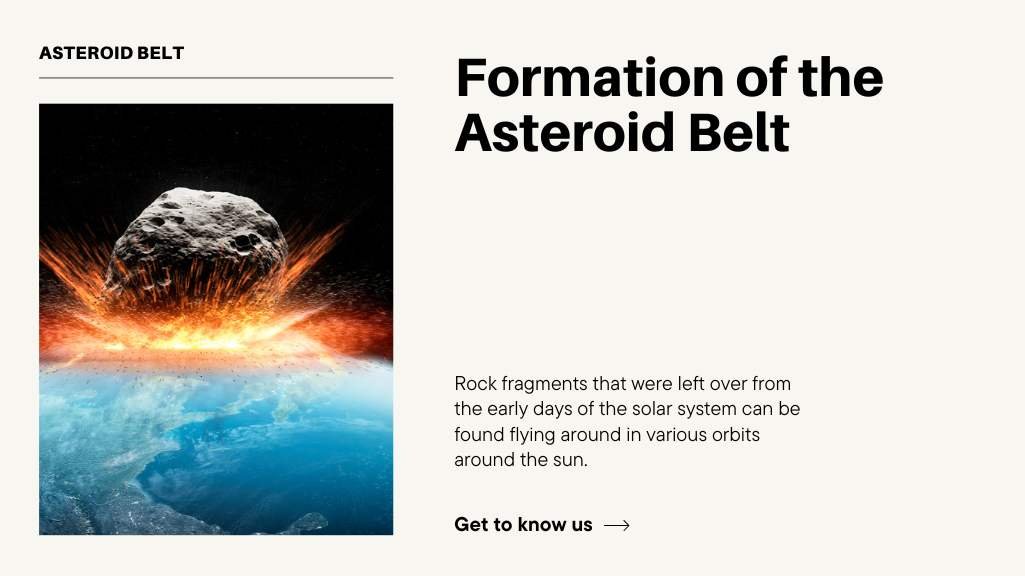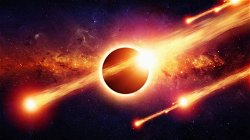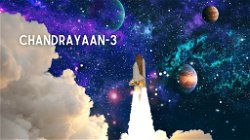What are the Conditions that Led to the Formation of the Asteroid Belt?
Poonam Junjunwala
. 2 min read
Rock fragments that were left over from the early days of the solar system can be found flying around in various orbits around the sun. The majority of these planetoids and asteroids, both of which get their names from the Greek words for "star-like," orbit in a band called the Main Asteroid Belt that stretches from Mars to Jupiter. The distance that the Main Asteroid Belt is from the sun is greater than two and a half times that of Earth's distance. NASA reports that it is home to millions of different asteroid types. With advancements in technology, scientists are now able to observe and study these fascinating celestial bodies through various means, including telescopes, robotic spacecraft, and even video chat sessions with astronauts aboard the International Space Station.

The Formation and Composition of the Asteroid Belt: Understanding the Origins and Diversity
Astronomers believe that the asteroid belt is made up of either material that was incapable of forming into a planet or the remnants of a planet that broke apart a very long time ago. Either way, the astronomers believe that the asteroid belt formed a very long time ago. There is a wide range of sizes represented among the asteroids that make up the asteroid belt. While others are quite large, the majority are quite small and measure less than one mile across.
The Depleted Nature of the Asteroid Belt: Exploring the Hypothesis of Gravitational Interactions
According to this hypothesis, gravitational interactions from the planets caused 99.9 percent of this material to be ejected out of this orbital region over the course of time. Therefore, the asteroid belt that we see today is the remnant of a reservoir of planetesimals that has been depleted to a significant degree. The word asteroid means starlike. The name "asteroid" was given to these celestial bodies because, when astronomers first uncovered them in the early 1800s, they mistook them for stars due to their appearance. Despite this, their motion was distinct from that of the star.
Asteroid Belts and the Rarity of Life-Bearing Planets
According to a study conducted by Rebecca Martin, a NASA Sagan Fellow from the University of Colorado in Boulder, and astronomer Mario Livio of the Space Telescope Science Institute in Baltimore, Maryland, solar systems that contain life-bearing planets may be exceedingly uncommon if they are dependent on the presence of asteroid belts of just the right mass. The findings were published in the journal Astrobiology. This may come as a surprise to you given that asteroids are generally regarded as a nuisance due to the fact that they have the potential to impact Earth and cause mass extinctions.
Exploring the Potential of Mining Asteroids for Raw Materials
The asteroids that pose the greatest risk to human life on Earth due to the fact that they can get relatively close to our planet are also the ones that could be mined for raw materials with the least amount of effort. In the twenty-first century, the exploration and colonization of our solar system will require the development of space structures as well as the production of rocket fuel. These raw materials could be used in the production of both of these things.
It has been calculated that the mineral wealth that is present in the belt of asteroids that lies between the orbits of Mars and Jupiter would be equivalent to approximately one hundred billion dollars for each and every person currently living on Earth.
More Stories from
Growing Impact of the Space Economy on Health, Technology, and Environment
This article discusses the growing impact of the space economy, including advancements in health and medicine, breast cancer screening and treatment etc.
Exploring the Final Frontier: A Glimpse into the World of Space Research
From probing distant galaxies with space telescopes to charting the potential for human life on other planets, this article provides a glimpse into the evolving field of space research.
Connected Cosmos: Embracing the Future of Space Exploration with Video Chat
Discover the potential for human colonization of other planets, breakthrough propulsion systems, and the expansion of our knowledge of the universe through space-based astronomy.
Chandrayaan-3: India's Ambitious Lunar Mission for Scientific Exploration
Chandrayaan-3, India's third lunar mission led by ISRO, aims to overcome past challenges and demonstrate soft landing capabilities on the Moon.







.png?width=40&aspect_ratio=1:1)


